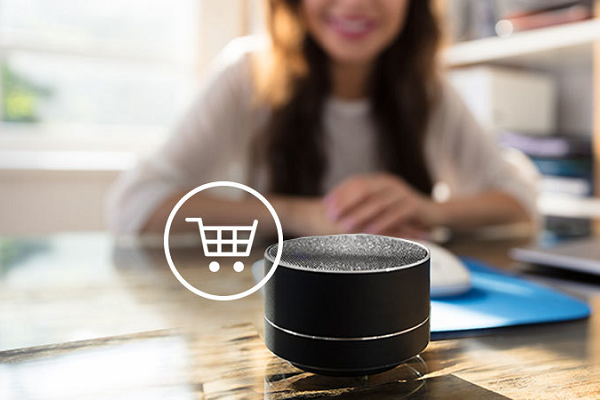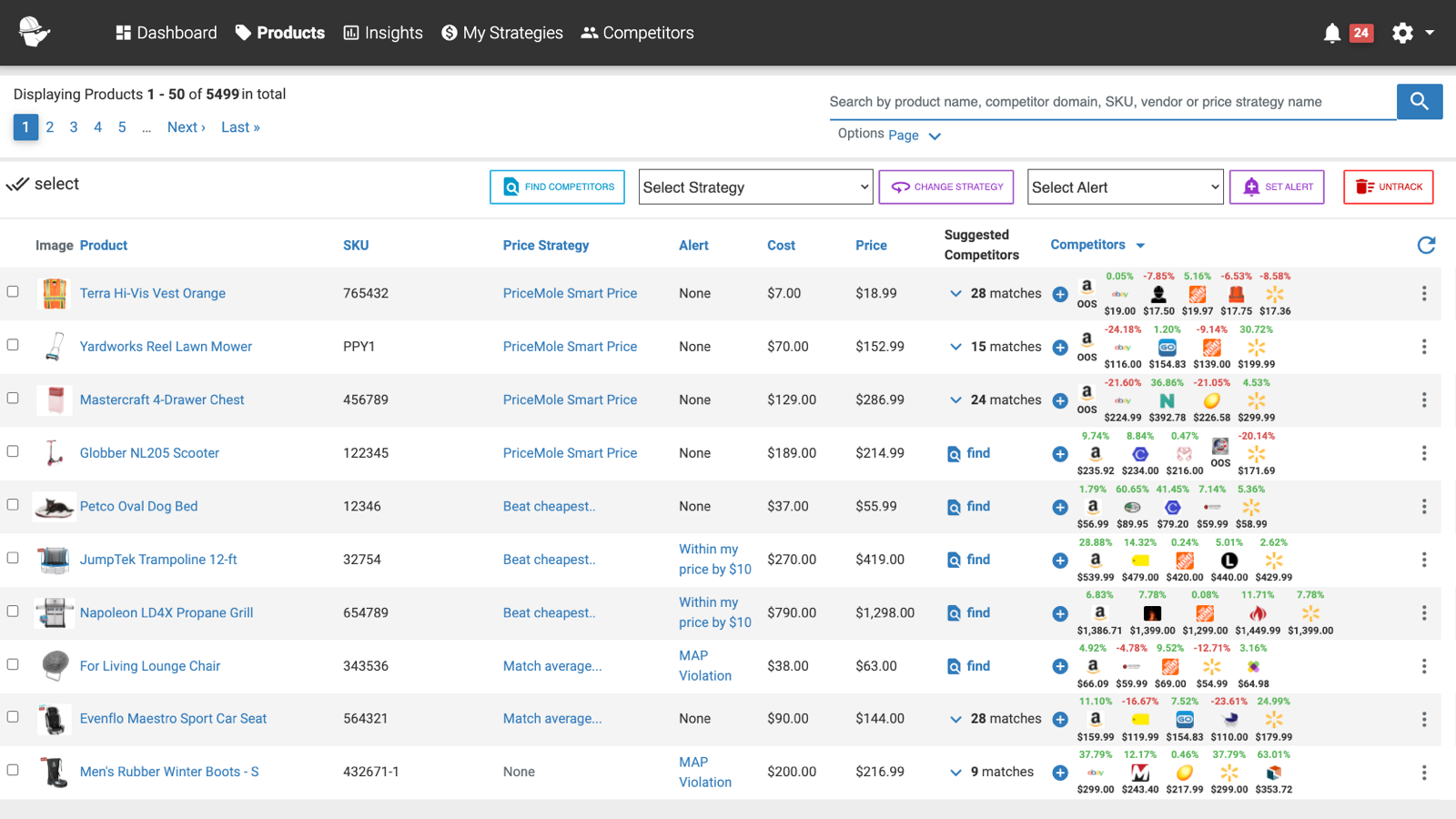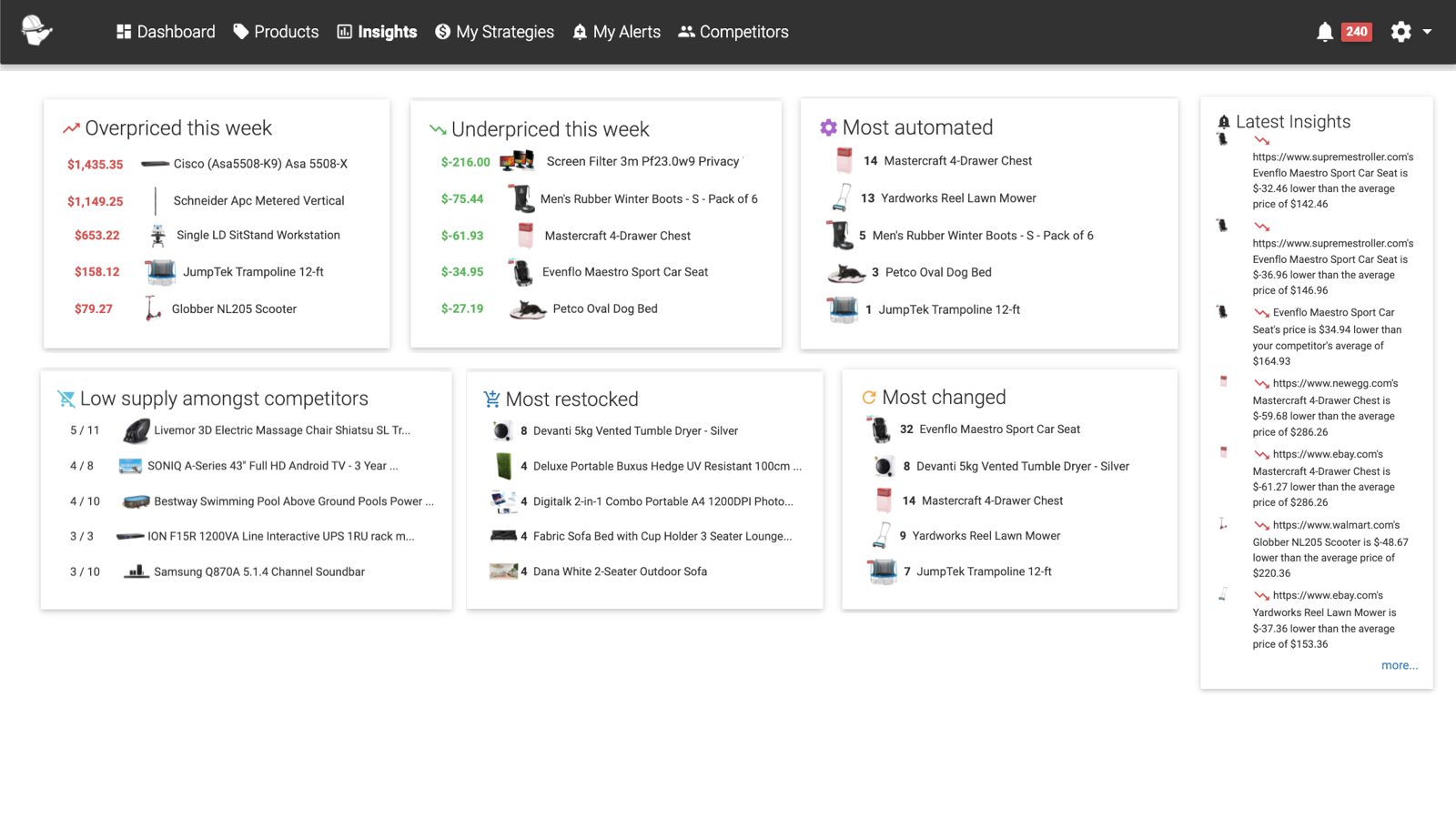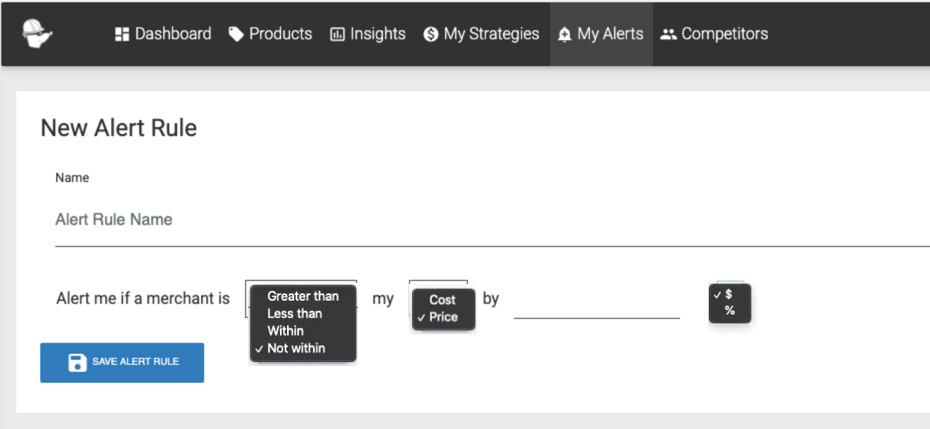Voice Your Way to Purchases: A Beginner's Guide to Voice Shopping 2024

Why deal with keyboards when you can use your voice? Voice assistants like Siri, Google Assistant, and Alexa are reshaping e-commerce. With a simple voice command, shoppers can make purchases, track orders, and compare prices. This guide will help you understand how voice shopping is revolutionizing the retail experience in 2024 and why it’s a must-have for Shopify Plus users and other e-commerce.
What is Voice Shopping?

Voice shopping leverages voice recognition technology to facilitate online purchases. This form of voice commerce enables customers to use spoken commands with digital assistants such as Apple’s Siri, Google Assistant, and Amazon’s Alexa. It typically involves smartphones or smart speakers like the Amazon Echo or Google Home, which interpret voice commands to handle shopping tasks.
Gizmodo praised the first Amazon Echo with the headline, "I Just Spoke to the Future and It Listened."
For consumers, voice shopping is as simple as activating a voice assistant with a wake phrase like "Hey Siri," "Hey Alexa," or "Hey Google," and then asking for specific products or categories. This method offers increased immediacy and convenience, especially for routine purchases or reorders where extensive product research isn't required.
"purchase e-commerce goods and serve as a gateway to 3,000 e-commerce service APIs on the Web." - Venture capitalist Gary Morgenthaler, the first investor in Siri, made this statement upon Siri's launch in 2011.
Many online retailers now support voice browsing, identity verification, and checkout processes, making voice shopping a more integrated and user-friendly experience.
The Process of Making Purchases Using Voice Commands
Imagine this scenario: you're at home washing dishes when you remember you need new workout shoes. With wet hands, you ask your Google Assistant to "Find me the best deal on running shoes." The assistant then offers recommendations or asks follow-up questions to narrow your search, such as inquiring about preferred brands or specific features.
Once you've selected a pair, the assistant adds them to your virtual cart. You can then ask it to finalize your purchase. After confirming your payment method and delivery address (which can be preset in your account settings), the voice assistant completes your purchase and may provide details like the expected delivery time.
The Rise of Voice Shopping
Nearly half of US shoppers are drawn to voice shopping for its ease of use. Despite the initial investment, more online retailers are adopting this technology to boost sales and strengthen customer connections.
Voice shopping has transitioned from a futuristic concept to a rapidly growing trend. Recent studies predict a 20% increase in voice shoppers this year, driven by the convenience of hands-free shopping and immediate access to information, making it a popular choice among today’s tech-savvy consumers.
Over 1 billion voice searches are made every month, with the monthly volume projected to reach 2 billion this year. Voice shopping consumers are expected to spend an estimated $39.8 billion worldwide.
In the U.S., 49% of consumers (approximately 127.4 million people) use voice search for shopping. In comparison, 58% of all consumers use it to learn about local small businesses and 32% for direct purchases. Additionally, 62% of smart speaker users plan to purchase using their device’s voice-enabled shopping in the next month. The value of voice-assisted sales has surged by 321.7% over two years, resulting in a compound annual growth rate (CAGR) of 105.4%.
Implementing Voice Shopping on Shopify Plus
Shopify Plus, a leading e-commerce platform, offers advanced features that can be optimized for voice shopping. Here’s how:
- Integration with Voice Assistants: Shopify Plus allows easy integration with major voice assistants. Your store can offer a more engaging shopping experience by enabling voice commands.
- Dynamic Pricing Strategies: Use price monitoring and automation tools like PriceMole to keep your prices competitive. Voice shopping can enhance this by allowing customers to check for the best deals in real-time.
- Streamlined Checkout Process: Simplify the checkout process with voice commands, reducing cart abandonment rates and enhancing customer satisfaction.
Challenges and Limitations of Voice-Activated Shopping
Despite its promise, voice-activated shopping has several challenges:
- Limited product information: Voice assistants provide limited details, making informed decisions difficult.
- Privacy concerns: Linking personal accounts raises security and privacy issues.
- Lack of tactile experience: Voice shopping needs physical interaction with products.
These limitations may hinder some consumers' adoption and challenge brands to optimize for voice search. However, voice shopping is expected to grow as technology advances, requiring brands to adapt their strategies.
Voice Shopping for B2B
Voice shopping isn’t just for B2C consumers. B2B businesses can also benefit from this technology:
- Efficient Reordering: B2B customers, voice commands can be a game-changer, allowing for quick and error-free reordering of supplies.
- Price Negotiation: Voice assistants can facilitate price negotiations and provide instant quotes, making the purchasing process smoother.
- Inventory Management: B2B companies can leverage voice technology for real-time inventory updates and order tracking.
Preparing for the Future

As voice shopping grows, staying ahead of the curve is crucial. Here are some tips for e-commerce businesses:
- Optimize for Voice Search: Ensure your website content is optimized for voice search queries. Focus on natural language and long-tail keywords.
- Enhance User Experience: Continuously improve the user experience by integrating AI and machine learning to provide more accurate and personalized responses.
- Invest in Security: Protect your customers’ data with robust security measures, especially when dealing with voice transactions.
In conclusion, voice shopping is transforming how consumers interact with e-commerce platforms. Amazon’s Alexa, Apple’s Siri, and Google Assistant have made voice-activated shopping popular, allowing Shopify Plus users and other eCommerce consumers to make purchases effortlessly. Embracing this trend, including integrating tools like PriceMole for dynamic pricing and competitive analysis, can lead to enhanced customer experiences, increased sales, and a competitive edge in the market.
PriceMole: Your Competitive Edge in Voice Commerce
Staying ahead of the competition is essential in the rapidly evolving e-commerce landscape. PriceMole empowers Shopify Plus stores to maintain their edge by monitoring competitor prices and implementing dynamic pricing strategies to optimize profitability. By leveraging real-time market data, PriceMole ensures your business remains competitive and agile in the era of voice commerce. Here's a closer look at what PriceMole offers:
1. Competitor Price Monitoring

PriceMole allows you to monitor competitor prices across multiple channels and regions in real-time. By tracking competitor pricing trends, you gain valuable insights into market dynamics and can adjust your prices accordingly.
2. Dynamic Pricing

With PriceMole's dynamic pricing capabilities, you can automate price adjustments based on predefined rules and conditions, such as competitor prices, demand, and inventory levels. For example, if a competitor lowers their price, PriceMole can automatically adjust your price to match or beat theirs, ensuring you stay competitive. This is particularly beneficial in voice commerce, where quick and accurate pricing adjustments can capture immediate sales.
3. Price Change Alerts

PriceMole provides customizable price change alerts, notifying you whenever competitors adjust their prices. This lets your store stay informed about pricing fluctuations and respond promptly to maintain competitiveness.
4. MAP Monitoring

PriceMole helps enforce Minimum Advertised Price (MAP) policies by monitoring and tracking prices across authorized resellers and online channels. This ensures compliance with brand pricing guidelines and protects brand integrity.
5. Easy Integration

PriceMole integrates seamlessly with popular e-commerce platforms such as Shopify and BigCommerce. The integration process is straightforward and doesn't require extensive technical expertise or development resources.
6. Widget Option for Enhanced Customization and Scalability

PriceMole offers a handy Competitor Widget as an optional feature. This widget allows you to effortlessly compare prices with competitors, aiding customers in making informed decisions. By displaying prices that rival or surpass competitors, your store reinforces trust and demonstrates its commitment to value. This trust is crucial for sustaining success in voice commerce, where customers expect quick and accurate responses.
7. Excellent Customer Support

PriceMole provides dedicated customer support to assist Shopify Plus and other online stores with setting up, configuring, and using the platform. Our support team is available 24/7 to answer questions or resolve issues. We are committed to ensuring that your store maximizes PriceMole's value and leverages its capabilities to drive growth and profitability.

Summary
Strategic pricing and automation are essential in the dynamic and highly competitive world of e-commerce. You can stay ahead of the pack with PriceMole's dynamic pricing and competitor monitoring. Mastering the art of dynamic pricing will allow you to embrace innovation, secure your competitive edge, and achieve sustainable growth, especially in the realm of voice commerce. Your success in the e-commerce landscape is within reach, starting with your pricing strategies.
Do you have questions, insights, or valuable perspectives to share? Contact us! Explore our Website, Shopify, BigCommerce, Facebook, Twitter, and LinkedIn. We're dedicated to ensuring your success and highly value your feedback!
